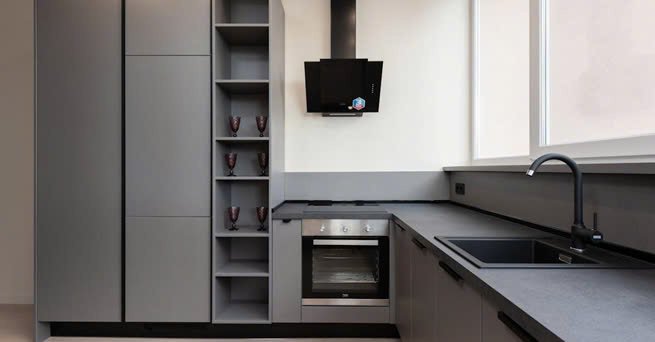How Efficient Are Wood-Burning Stoves? Everything You Need to Know
Discover the efficiency of wood-burning stoves, including their heating benefits, energy savings, and environmental impact, to determine if they are right for your home.
Wood-burning stoves have significantly improved in efficiency and environmental impact over the years. Modern stoves are designed with advanced combustion technology that maximizes heat output while minimizing emissions, making them a more sustainable heating option. With features like airtight doors, secondary combustion chambers, and catalytic converters, these stoves burn wood more completely and reduce the release of harmful pollutants. For eco-conscious homeowners, a high-efficiency wood stove not only reduces reliance on fossil fuels but also uses a renewable energy source—wood—when sourced sustainably. This makes them an excellent option for those looking to reduce their carbon footprint without sacrificing warmth and comfort during colder months.
In this article, we'll explore the ins and outs of wood-burning stove efficiency, helping you understand why these traditional heating methods are still relevant in today's energy-conscious world.
Discover how to maximize efficiency with your wood-burning stove in today’s article!
How Is Efficiency Measured in Wood-Burning Stoves?
When discussing wood-burning stove efficiency, two critical factors come into play: heat output and fuel efficiency. Heat output measures how much of the heat produced by burning wood actually warms your home, while fuel efficiency focuses on how thoroughly the wood burns. A well-designed stove maximizes both by using advanced technology like secondary combustion systems that re-burn gases and particles, turning more of the fuel into heat. This leads to reduced wood consumption, lower emissions, and a cozy, warm living space with less waste. Modern stoves excel in these areas, making them an eco-friendly, cost-effective heating option for homeowners looking to balance comfort and sustainability.
The efficiency of a wood-burning stove is typically measured by the percentage of heat retained inside the room versus what's lost through the chimney. Modern, high-efficiency stoves can retain up to 80% of the heat produced, compared to older models that might only keep 30-40% of the heat in the room.
Proper insulation and airflow control play crucial roles in maximizing efficiency. Well-designed stoves use a system of baffles and air vents to ensure that the wood burns slowly and completely, extracting the maximum amount of heat from each log.
What Factors Influence the Efficiency of a Wood-Burning Stove?
Several factors can affect how efficiently your wood-burning stove operates:
Wood quality: The type of wood you use makes a significant difference. Dry, well-seasoned hardwoods like oak or maple burn more efficiently and produce less smoke than softer or wetter woods.
Stove design: Modern stoves with advanced airflow systems and insulation are far more efficient than older models. Look for stoves with secondary burn systems, which reignite gases and particles that would otherwise escape unburned.
Maintenance: Regular cleaning and removing soot build-up from the chimney enhances performance. A clean stove and chimney allow for better airflow and more complete combustion.
Tips to Maximize Efficiency in Your Wood-Burning Stove
To get the most out of your wood-burning stove, consider these practical tips:
Use dry, seasoned wood: Aim for wood with a moisture content below 20%. It burns hotter and cleaner, producing more heat and less creosote buildup in your chimney.
Load the stove correctly: Fill the firebox to the recommended level, but avoid overloading. Overloading can lead to incomplete combustion and increased emissions.
Control the airflow: Adjust the stove's air vents to ensure optimal combustion. Generally, you'll want more air when starting the fire and less as it gets going.
Regular chimney cleaning: Soot and creosote can reduce the stove's efficiency over time. Annual cleaning (or more frequent if you use the stove heavily) can help maintain peak performance.
The Environmental Impact of Efficient Wood-Burning Stoves
Modern, efficient wood-burning stoves can be a more eco-friendly heating option than you might think. Here's why:
Eco-design: Today's stoves comply with strict environmental standards that significantly reduce particulate emissions compared to older models.
Sustainable fuel: Wood is a renewable resource. When harvested responsibly and burned efficiently, it can have a lower carbon footprint compared to fossil fuels.
Reduced consumption: Higher efficiency means you'll burn less wood to achieve the same level of warmth, further reducing your environmental impact.
In conclusion, modern wood-burning stoves offer impressive efficiency and are an excellent option for those looking for an economical and ecological heating source. By using high-quality wood, maintaining the stove regularly, and investing in a contemporary design with advanced features, you can achieve optimal heat output and fuel efficiency. This not only lowers your heating costs but also reduces your environmental impact, making wood-burning stoves an eco-friendly choice that enhances both comfort and sustainability in your home.
Stay up to date with our latest ideas!
Exclusive deals just for our readers! Click below to unlock special offers and elevate your shopping experience!






























